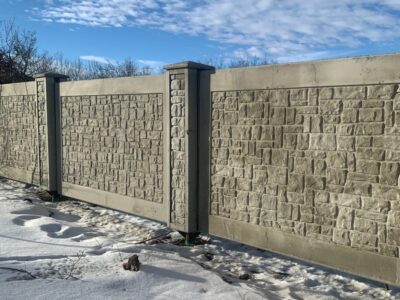Gardening with deer presents a unique set of challenges. Those of us familiar with the battle know how difficult it can be to have a beautiful garden in deer territory. The furry buggers seem to know exactly which plants are our favorites, don’t they? Over the last twenty years I’ve tended over 40 gardens as a professional horticulturist, and I’ve learned a lot about the ups and downs of gardening with deer in that time. Today, I’d like to share all of the things I’ve learned and present a four step plan for building gorgeous, nearly deer proof gardens.
4 Tactics for deer proof gardens
As cities and towns expand into deer habitats, white-tailed deer in the East and mule deer in the West have become increasingly troublesome for gardeners. Each deer herd has unique preferences when it comes to browsing, making gardening with deer a test of patience and adaptability. It’s important to remain flexible in plant selection and deer management techniques, as what deters one herd might not work for another. Through years of trial and error, I’ve found that combining all four tactics outlined below and adjusting strategies based on deer behavior yields the most effective results. Despite frequent visits from deer and evidence of their presence, diligent implementation of these tactics has minimized feeding damage, resulting in beautiful, nearly deer-proof gardens.
Tactic 1: Opt for Deer-Resistant Plants
The key to establishing a garden that deer are less likely to disturb lies in making thoughtful choices when selecting plants. By opting for species with certain characteristics that deer tend to avoid, you can minimize the risk of damage and disappointment in your garden. Look for plants with fuzzy or prickly foliage, as well as those that emit strong fragrances or contain toxic compounds. Examples of such plants include lambs ear, globe thistle, sage, ferns, and peonies. Additionally, incorporating ornamental grasses into your garden can further deter deer, as they typically prefer other types of vegetation over grasses. By prioritizing these resistant plant varieties in your garden design, you create an environment that is less appealing to deer, ultimately reducing the potential for browsing and damage to your cherished plants.
Tactic 2: Implement Effective Deer Fencing
Installing the right type of deer fence is essential for safeguarding your garden. Deer can leap over standard fences, so opt for at least an eight-foot-tall stockade fence or use double-layered fencing. Alternatively, create a deterrent by surrounding your garden with large rocks or installing electric fences. For individual plants, consider using deer netting for protection. Thoughtful fencing choices can effectively deter deer and preserve the beauty of your garden space.
Tactic 3: Utilize Deer Repellents Consistently
Deer repellents are effective when used consistently and correctly. Apply odor and taste deterrents weekly to vulnerable plants, especially those not naturally deer-resistant. Look for products containing putrified eggs, dried blood, garlic, or soaps, as these have proven efficacy. Ensure proper application to maximize effectiveness, and consider using repellents with spreader-sticker additives for better adhesion. By maintaining a diligent schedule of repellent application, you can significantly reduce deer damage in your garden.
Tactic 4: Scare Deer Away with Motion-Activated Sprinklers
Motion-activated sprinklers are a practical scare tactic for deterring deer. These devices deliver a burst of water upon detecting movement, startling and repelling deer from specific garden areas. Opt for models with infrared sensors for nighttime functionality and position them strategically to protect your plants. While motion-activated sprinklers are ineffective during winter due to freezing, they serve as an excellent deterrent throughout the growing season. By rotating and adjusting their placement, you can maximize their effectiveness in safeguarding your garden.
Conclusion
Deer-proof gardening requires a proactive approach that combines plant selection, fencing, repellents, and scare tactics. By embracing flexibility and persistence in implementing these tactics, you can create and maintain stunning gardens that are nearly impervious to deer damage. Experiment with different strategies to find what works best for your specific deer population, ensuring that your gardening efforts yield beautiful and flourishing landscapes despite the challenges posed by these graceful yet voracious creatures.













Comments